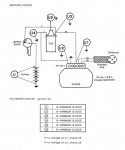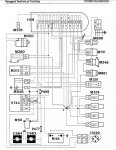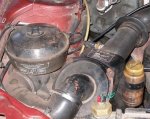Hi Rob,
I never ran an o2 gauge on the OE renix system, but one day for a giggle i asked the local shop to do an at idle 3 gas exhaust test.
This was a bog standard renix system designed for 2.2l, but on a 2l donk. Same bore, 88mm... just shorter stroke and much lighter internals.
We were blown away with the results…As close to theoretical perfection as one could hope for.
The tech commented that most new cars don't even get readings as close to perfect. He was majorly impressed that a cobbled together 1984 system could pul those numbers.
Jo
I never ran an o2 gauge on the OE renix system, but one day for a giggle i asked the local shop to do an at idle 3 gas exhaust test.
This was a bog standard renix system designed for 2.2l, but on a 2l donk. Same bore, 88mm... just shorter stroke and much lighter internals.
We were blown away with the results…As close to theoretical perfection as one could hope for.
The tech commented that most new cars don't even get readings as close to perfect. He was majorly impressed that a cobbled together 1984 system could pul those numbers.
Jo




